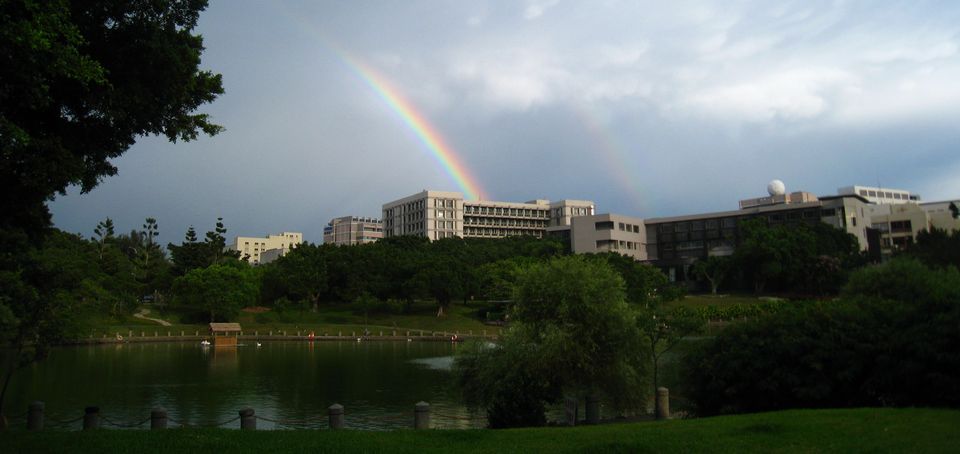Team:NCTU Formosa
From 2010.igem.org
(Prototype team page) |
Chialemeng (Talk | contribs) (NCTU_Formosa_Project Description) |
||
| Line 1: | Line 1: | ||
| - | + | [[Image:NCTU_Formosa_logo.png]] | |
| - | < | + | <h1><b><font color="9f0000"><font face="Arial">Project Description</font></font></b></h1> |
| - | < | + | |
| - | <div | + | <div align="justify"> |
| - | This is a | + | <font face="Arial">The project we propose this year is an environmental friendly insecticide, aiming for killing wrigglers, larvae of mosquitoes. We intend to create a kind of E. coli being able to produce crystal proteins which are pesticidial to specific mosquitoes. The crystal proteins, abbreviated cry proteins, are coded by the cry genes from Bacillus thuringiensis. There are more than one hundred different cry genes being found and characterized. Each kind of cry protein has different insecticidal toxin to different species of insects. The toxins of cry proteins have high specificities. |
| + | <br> | ||
| + | <br> | ||
| + | The reason why we place the emphasis on mosquitoes is that mosquitoes are not only annoying but being responsible of spreading some serious illnesses, such as dengue and Japanese encephalitis. However, insecticide we have nowadays always not being able to kill all the mosquitoes of every corner, moreover, chemical pesticides are toxic to both target and non-target species. In addition, over 90 percent of insecticides spread are wasted because they never work on the targets; they are absorbed by the environment instead. This phenomenon is also toxic to the environment. | ||
| + | <br> | ||
| + | <br> | ||
| + | Wrigglers live in still water, also a place for E. coli to live. We employ E. coli to make and secrete cry proteins to kill wrigglers to decrease the amount of mosquitoes from the first place. In our project we choose the cry proteins coded by cry30Ga1 rom Bacillus thuringiensis , cry4A, cry4B, and cry11A from bacillus thuringiensis subsp. Israelensis. The cry proteins mentioned above are toxic to Aedes, Culex and Anopheles larvae. For the sake of environmental and ecological safety, we will construct the genetic circuit to control the expression level of cry protein and the population size of E. coli. | ||
| + | </font> | ||
</div> | </div> | ||
| - | |||
| - | |||
| - | |||
| - | |||
| - | |||
| - | |||
| - | |||
| - | |||
| - | |||
| - | |||
| - | |||
| - | |||
| - | |||
| - | |||
| - | |||
| - | |||
| - | |||
| - | |||
| - | |||
| - | |||
| - | |||
| - | |||
| - | |||
| - | |||
<!--- The Mission, Experiments ---> | <!--- The Mission, Experiments ---> | ||
Revision as of 06:53, 15 July 2010
Project Description
The project we propose this year is an environmental friendly insecticide, aiming for killing wrigglers, larvae of mosquitoes. We intend to create a kind of E. coli being able to produce crystal proteins which are pesticidial to specific mosquitoes. The crystal proteins, abbreviated cry proteins, are coded by the cry genes from Bacillus thuringiensis. There are more than one hundred different cry genes being found and characterized. Each kind of cry protein has different insecticidal toxin to different species of insects. The toxins of cry proteins have high specificities.
The reason why we place the emphasis on mosquitoes is that mosquitoes are not only annoying but being responsible of spreading some serious illnesses, such as dengue and Japanese encephalitis. However, insecticide we have nowadays always not being able to kill all the mosquitoes of every corner, moreover, chemical pesticides are toxic to both target and non-target species. In addition, over 90 percent of insecticides spread are wasted because they never work on the targets; they are absorbed by the environment instead. This phenomenon is also toxic to the environment.
Wrigglers live in still water, also a place for E. coli to live. We employ E. coli to make and secrete cry proteins to kill wrigglers to decrease the amount of mosquitoes from the first place. In our project we choose the cry proteins coded by cry30Ga1 rom Bacillus thuringiensis , cry4A, cry4B, and cry11A from bacillus thuringiensis subsp. Israelensis. The cry proteins mentioned above are toxic to Aedes, Culex and Anopheles larvae. For the sake of environmental and ecological safety, we will construct the genetic circuit to control the expression level of cry protein and the population size of E. coli.
| Home | Team | Official Team Profile | Project | Parts Submitted to the Registry | Modeling | Notebook | Safety |
|---|
 "
"
